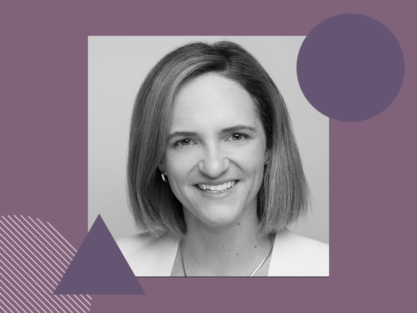February 14, 2023 – Michaela Kerrissey, an assistant professor of management at Harvard T.H. Chan School of Public Health, was recently named to the Thinkers50 Radar, a select global list identifying people whose ideas are expected to have a significant impact in shaping management strategy in the years to come. In this Big 3 Q&A, she explains her research into effective team-building—and why it matters for public health.
Q: Your work in management science would be at home in any business school, but you bring a unique public health lens to the research. Why is this field important for public health?
A: Think about what makes the health care field special. It’s the highest stakes; there are lives on the line. You’re under time pressure. You have resource constraints. And often, solving problems requires bringing together diverse perspectives. But this environment rarely allows the space to closely get to know the people you’re working with—and yet you have to come together and collaborate anyway.
I love studying teamwork and management across all industries, but the complexity and intensity in health care make it fascinating. I could talk for hours about it. This also makes health care a good frontier for advancing management science. If you can make it work in health care, you can make it work almost anywhere. And what better prize than improving patient outcomes?
Q: A lot of your research focuses on team dynamics. What makes a successful team in the health care setting?
A: For 40 years, people have been studying what makes teams thrive, and we’ve made a lot of progress. But most of that research has been on stable teams, where everyone knew everyone and they collaborated for a long time, so they could develop trust, set shared norms, and learn what other people know.
That’s often not the situation today, especially in health care. Teams form quickly and across great diversity; you might not even know your colleagues’ names when you’re brought together to handle a medical crisis. During COVID, it’s been even more challenging—when everyone is suited up in PPE [personal protective equipment], you can’t even see one another’s faces. So health care is very challenging for building trust and shared understandings.
My research has focused on identifying factors that help people work together effectively even when they don’t have the luxury of developing familiarity over time. A lot of this is about setting climates and processes that help people speak up, hear one another, and jointly solve problems rather than go it alone. And my studies have shown that these elements of team climates can be measured and that they consistently differentiate higher-performing teams from lower-performing ones. This is a big deal because it means that teamwork climates aren’t afterthoughts or nice-to-haves. They are core to producing the outcomes we care about.
In my recent work, I’ve studied team dynamics in over 40,000 people, spread over 6,000 groups within one large health system, and you can see these climate factors vary notably. If organizations can tap into this kind of variance for learning, it could have a powerful impact.
Q: What’s next for your research?
A: The field of health care is so data-driven, yet here’s this thing called teamwork—which we all say is the foundation of the enterprise—and we don’t have data on how it’s working. It’s not measured systematically. It’s not part of dashboards. It’s basically managed by intuition. We are at a place where we can’t leave it to chance any more. This is the problem I want to address.
My current focus is unlocking how to measure, inform, and improve teamwork climates at scale across large organizations. That is going to take using technology in new ways to harness and synthesize what at its core is about interpersonal dynamics and behaviors. It’s easy to think that these social features don’t mesh well with technology, but in an organization with 40,000 employees—or even 5,000—we probably don’t have much of a choice. From what I have seen so far, I believe there is a viable path, but it has to be developed with care and rigor.
The goal is to blend traditional organizational psychology metrics with things like natural language processing to develop better methods of assessing teamwork climates and progress in real time. The idea is to use short, open-ended questions, passively collected metrics about workplace behaviors, and strategic sampling techniques to capture rich information about teams—and to do it efficiently, in real time and in a way that supports insight and action. To be able to say, ‘If you’re trending down on this metric, here’s what you can do about it right now.’ Recent advances in large language models and generative artificial intelligence (AI)—meaning AI that doesn’t just classify or predict data, but creates new content on its own—are opening opportunities for operationalizing this kind of work in ways that we thought were impossible just a couple of years ago. It’s an interesting time.
We know that effective team climates can be measured, and that you can intervene and make improvements when they’re lacking. This research is about giving organizations and the people in them the information and tools they need to do that intelligently and at scale. That will be a big leap forward. And well timed: The problems we face right now in health are big and hard, and we need people working together at their best.
